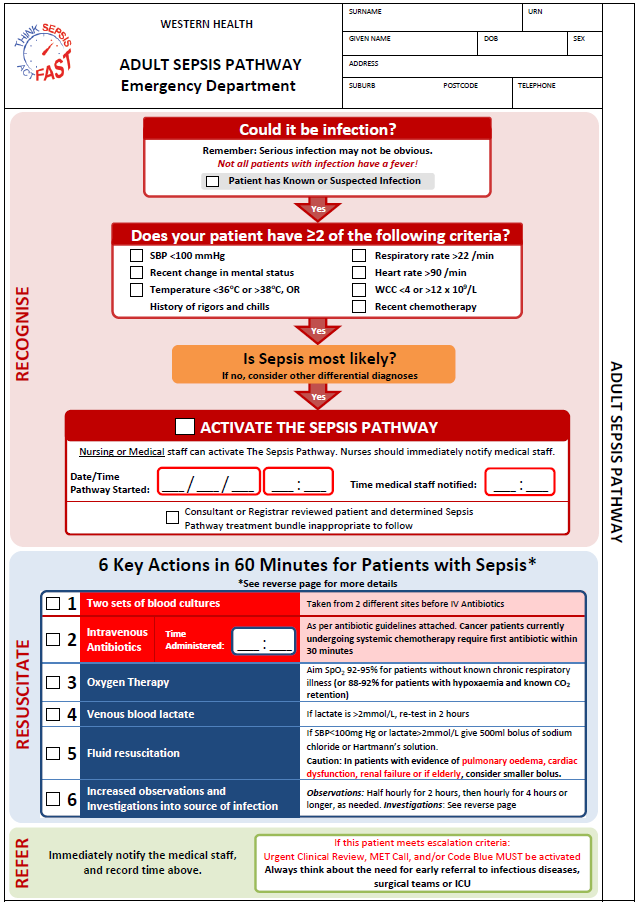
March 29, 2021
Overview:
As we embrace and celebrate the exciting news that F ED has been provided support to initiate a Choosing Wisely project related IV cannulation, we look at back to the last time we implemented a successful infection prevention and management project.
What is sepsis?
Sepsis is the overwhelming response of the body to severe infection. Sepsis is a complex syndrome that can be difficult to define, diagnose, and treat. It is a global threat.
Deaths from sepsis
Sepsis causes more deaths than prostate cancer, breast cancer, and HIV/AIDS combined. Globally, an estimated 20 to 30 million cases of sepsis occurs each year.1 In Australia the incidence of sepsis continues to rise.2 At the Royal Melbourne Hospital the mortality related to sepsis was estimated to be 13.5%.
Sepsis is a medical emergency
Sepsis is a medical emergency and early recognition and early treatment can save lives. Rapid initiation of simple, timely interventions including antimicrobials and intravenous fluids can decrease the risk of dying.3,4
Why is this important:
What Can We Do?
Sepsis is a whole of team approach. Each time you assess your patient think about whether or not this could be sepsis.
Key Elements
- Recognise – risk factors and signs/symptoms of sepsis. Notify the medical staff
- Resuscitate – with oxygen, IV fluids and antibiotics within one hour
- Refer – Immediately notify the covering HMO. Do not hesitate to escalate to senior medical clinicians
If you suspect Sepsis – you should be placing the patient on the Sepsis pathway and implementing the 6 key Actions within 60 Mins.
6 Key Actions within 60 Minutes
- Administer oxygen
- Take 2 sets of blood cultures
- Measure serum lactate
- IV fluid resuscitation
- IV antibiotics (based on the empiric antibiotic guide)
- Monitor urine output, vital signs, and reassess every 30 minutes for 2 hours and then hourly for 4 hours
Figure 1: WH ED Adult Sepsis Pathway

Supporting Documents


